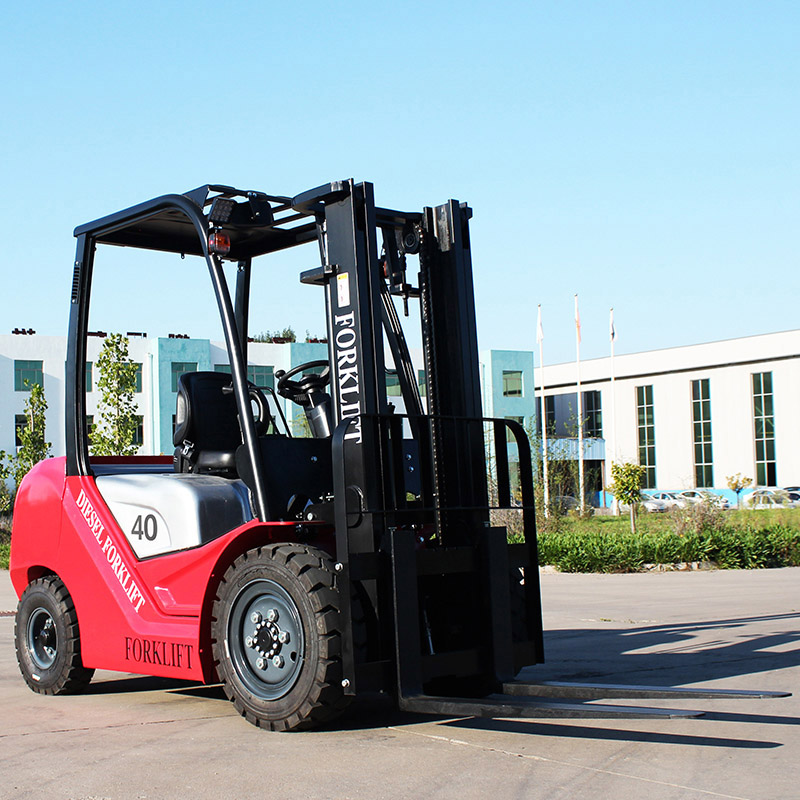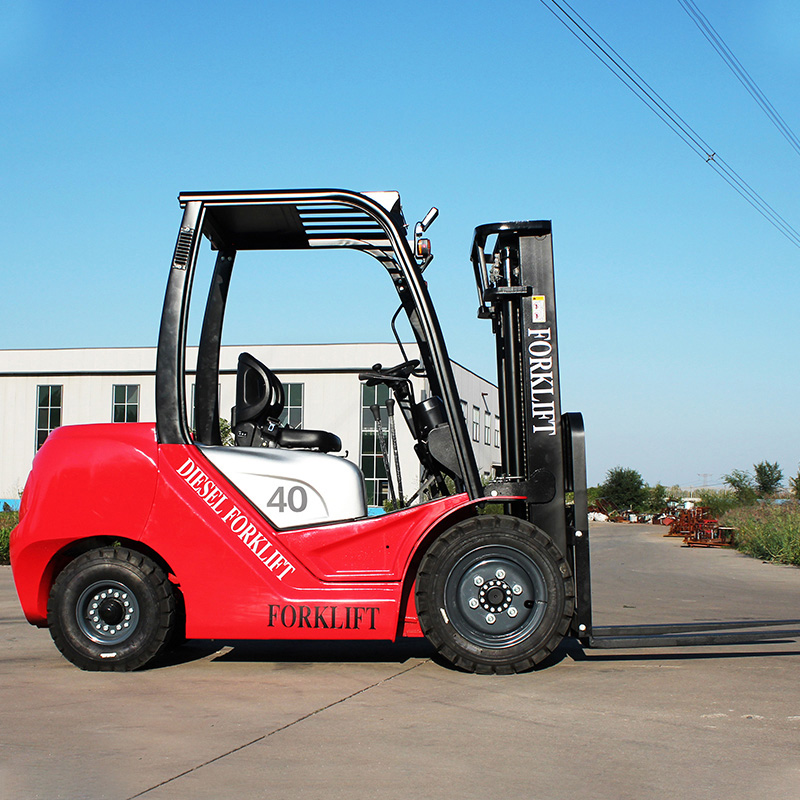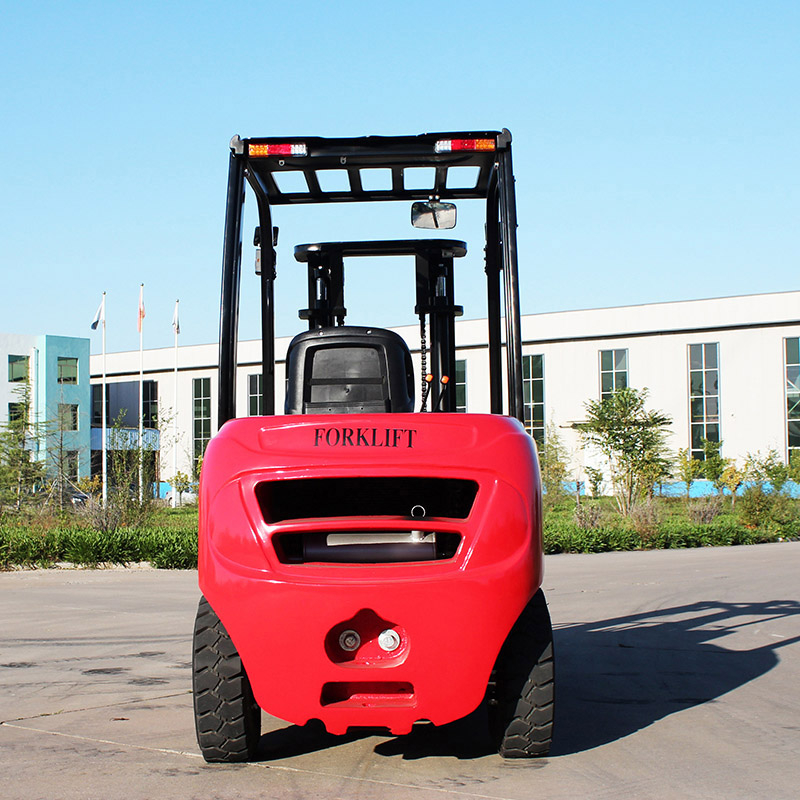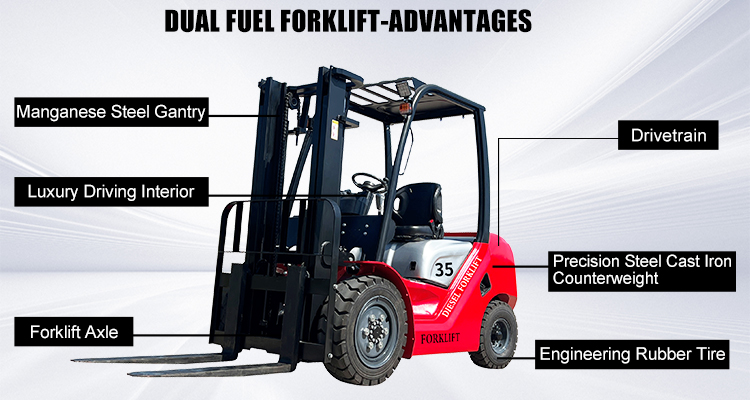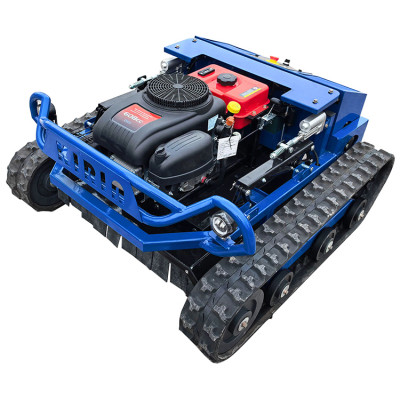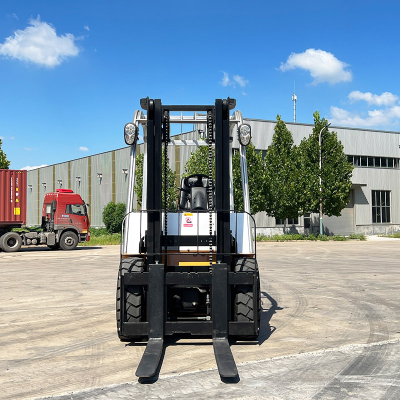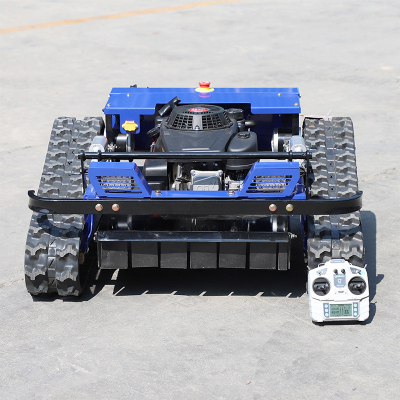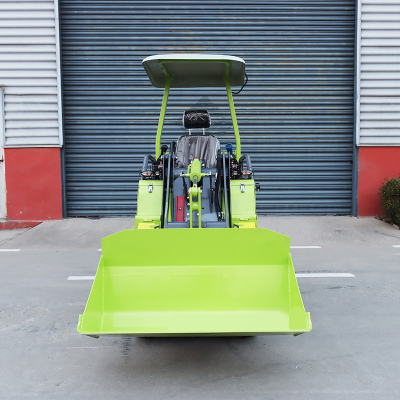Electric counterbalance forklift
Fuel-powered forklifts (typically including diesel, gasoline, and LPG forklifts) offer irreplaceable advantages in specific scenarios due to their power characteristics and environmental adaptability. Their core advantages can be summarized in five key dimensions: power performance, operating efficiency, environmental adaptability, maintenance costs, and load capacity. The details are as follows:
1. Powerful power and stable endurance, suitable for high-intensity operations
2. High load capacity, suitable for heavy-duty industrial applications
3. Strong environmental adaptability, unrestricted by charging conditions
4. Manageable long-term maintenance costs, easy repairs, and widely available spare parts
5. No site restrictions, suitable for outdoor/open spaces
This diesel forklift offers exceptional performance and reliability. Equipped with rearview mirrors, headlights, and thickened door frames, it enhances safety and practicality. Its stable structure ensures stability and safety even under heavy loads. The RF35 diesel forklift, with its exceptional performance and reliability, is suitable for use in logistics, warehousing, manufacturing, and other fields.
1. Zero Emissions, Environmental Compliance
Powered by batteries, these electric forklifts produce zero exhaust emissions, no CO, NOx, or particulate matter pollution, and fully meet environmental and safety standards for indoor operations. They are suitable for air-quality-sensitive industries such as food, pharmaceuticals, electronics, and cold chain, helping companies easily comply with environmental regulations.
2. Ultra-Low Noise, Creating a Comfortable Working Environment
The motor operates quietly and smoothly, keeping overall noise levels below 70 decibels, significantly lower than the clamor of internal combustion forklifts. Whether for nighttime delivery, high-density warehousing, or logistics corridors near office areas, these forklifts effectively reduce noise disruption, enhancing employee focus and job satisfaction.
3. Energy-Saving and Consumption-Reducing, Long-Term Cost-Effective
Electricity costs are significantly lower than fuel costs, and the electric system boasts high energy efficiency. Regenerative braking technology recovers some kinetic energy, further conserving electricity. Maintenance is unnecessary, requiring no oil, filter, or spark plug changes. The simple transmission structure reduces failure rates, reducing overall operating costs by 30%-50%.


